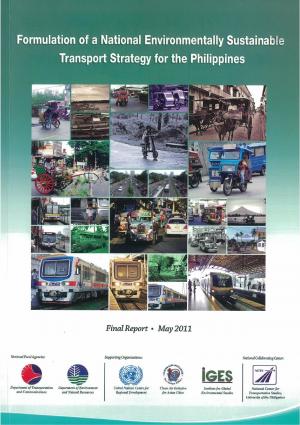Transit Advertising Philippines for Unmatched Brand Name Visibility
Transit Advertising Philippines for Unmatched Brand Name Visibility
Blog Article
Exploring the Influence and Efficiency of Transit Marketing in Urban Marketing Approaches
Transportation advertising has actually come to be a substantial element of city advertising and marketing methods, utilizing on the unique dynamics of mass transit atmospheres. Its ability to reach a diverse and wide audience provides brands with a chance to create meaningful connections via consistent exposure. Nonetheless, with the rapid development of technology and shifting customer behaviors, the landscape of transit advertising is undergoing remarkable changes that merit closer exam. What implications do these fads hold for marketers seeking to harness the complete potential of this tool?
The Rise of Transit Advertising And Marketing
As city populaces remain to swell, the need for innovative marketing options has actually caused the increase of transit marketing as a crucial part of city advertising methods. This form of marketing leverages public transport systems-- such as trains, buses, and trains-- to reach a varied target market in densely populated areas. The effectiveness of transportation advertising and marketing exists in its capacity to engage consumers during their daily commutes, an usually forgotten yet important time for brand name messaging.
With cities ending up being increasingly stuffed, standard advertising spaces are ending up being limited and much less effective. Transportation advertising and marketing offers a dynamic alternative, making it possible for brands to showcase their messages in high-traffic locations where prospective customers are continually exposed to the advertisements. Additionally, as city locals increasingly depend on mass transit, the importance and exposure of transit advertising have actually grown considerably.
Moreover, technical developments have improved the sophistication of transportation advertising, enabling electronic displays and interactive projects that can capture customer attention better than fixed ads. Because of this, transportation advertising is not just an affordable alternative yet also an important technique for brands seeking to get in touch with city customers in a memorable and impactful manner.
Secret Benefits of Transportation Advertising
The effectiveness of transit advertising and marketing is emphasized by its multifaceted benefits, making it a very useful device for metropolitan marketing experts. Among the key benefits is its extensive reach; transit systems serve countless travelers daily, enabling brands to get in touch with a diverse audience in high-traffic atmospheres. This presence improves brand name recognition, ensuring that ads are seen continuously by commuters.

Additionally, transit advertising is cost-effective contrasted to other media, supplying a lower cost per impression while keeping high exposure. The adaptability of advertisement formats, from bus covers to digital displays, permits for impactful and imaginative campaigns that can adapt to transforming market needs.
Consumer Habits Insights
A considerable section of consumer actions is influenced by the pervasive nature of transportation marketing in metropolitan environments. This kind of advertising catches the focus of diverse demographics, involving customers during their daily commutes. As people navigate dynamic cityscapes, they run into transit ads in different styles, including bus covers, train posters, and electronic displays. The calculated placement of these advertisements maximizes presence, thus improving brand name recall.
Research study indicates that transportation advertising and marketing can evoke emotional feedbacks, resulting in increased brand fondness. Customers typically connect the experience of commuting with particular brand names, producing a long-term impact that affects purchasing choices. Additionally, the frequency of exposure to transit ads fosters familiarity, which is a crucial aspect in consumer count on and loyalty.

Furthermore, the public aspect of public transportation adds to this phenomenon; as other individuals share spaces, they are most likely to talk about and recommend brands they come across. Hence, transportation marketing not only reaches consumers but additionally boosts social interactions that reinforce brand name messaging. Recognizing these behavioral insights permits online marketers to customize their strategies properly, making certain that their projects resonate with target audiences in the metropolitan landscape.
Instance Researches and Success Stories
Successful implementation of transit marketing strategies is exemplified with different instance researches that highlight its effectiveness in urban marketing. One noteworthy example is the cooperation in between a preferred beverage business and a major city's public transit system. The project used bus wraps and indoor posters, causing a 30% rise in brand name recognition and a 15% surge in sales within the target demographic over three months.
Another effective instance included a local their website restaurant chain that used train terminal advertising to draw in commuters. By creating aesthetically striking ads that supplied timed promotions, the dining establishment experienced an uptick in foot web traffic, with a remarkable 25% boost in lunch hour clients.
Moreover, a city's tourism board launched a transportation campaign showcasing local destinations with bus stop display screens and train advertisements. The campaign resulted in a substantial boost in tourist visits, as reported by a 40% increase in inquiries at site visitor facilities.
These study emphasize the flexibility and potential of transit advertising and marketing to engage metropolitan target markets successfully, demonstrating that calculated placements can produce substantial returns on investment and enhance brand name visibility in dynamic urban atmospheres. - Transit Advertising Philippines
Future Fads in Transit Advertising
As city landscapes proceed to advance, so also does the realm of transportation advertising, which is positioned to embrace innovative technologies and strategies. One significant trend is the combination of digital advertising and marketing displays right into public transit systems.
Another emerging fad is using increased reality (AR) and virtual fact (VR) experiences within transit marketing. These immersive innovations can mesmerize commuters, changing mundane trips right into interactive brand experiences. In addition, sustainability is coming to be significantly vital; eco-friendly advertising and marketing materials and techniques are most important link likely to acquire grip, mirroring the growing customer need for company social obligation.
Finally, the rise of mobile connection will certainly help with greater assimilation between transit advertising and individual gadgets. Marketers can produce seamless cross-channel experiences, allowing for prompt interaction and involvement with prospective clients. Collectively, these trends suggest a transformative future for transit marketing, offering new methods for brands to get in touch with metropolitan target markets.
Final Thought
Transportation advertising has actually developed itself as a substantial element of city advertising approaches, demonstrating considerable performance through boosted brand exposure and customer interaction. The ability to adapt messages to details demographics, paired with the ingenious use of modern technology, positions transit advertising and marketing as a driving pressure in contemporary marketing (Transit Advertising Philippines). As urban atmospheres remain to progress, the future of transportation marketing assures further improvements, guaranteeing its importance and influence in shaping consumer understandings and habits in city landscapes
As city populaces proceed to swell, the need for innovative marketing options has led to the surge of transportation advertising and marketing as a critical element of metropolitan marketing strategies.A considerable portion of consumer behavior is affected by the prevalent nature of transit advertising and marketing in urban environments. Jointly, these fads show a transformative future for transit advertising, offering brand-new avenues for brands to connect with city target markets.
Transportation advertising has established itself as a considerable component of urban advertising and marketing techniques, demonstrating substantial performance with enhanced brand visibility and consumer involvement. As metropolitan atmospheres continue to develop, the future of transit advertising and marketing guarantees more innovations, ensuring its relevance and influence in shaping consumer assumptions and actions in urban landscapes.
Report this page